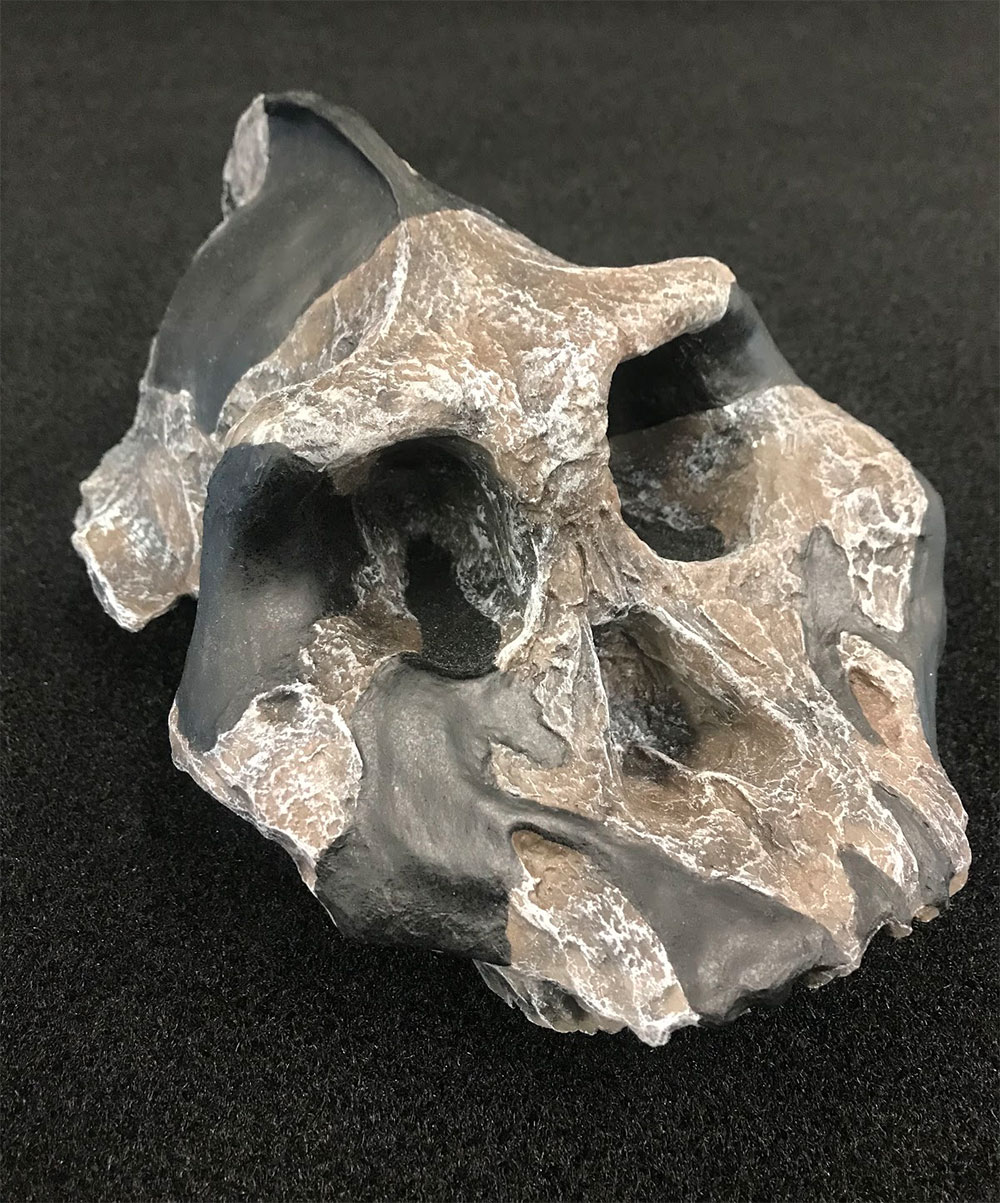Paranthropus aethiopicus
Cranium KNM-WT 17000 - 2.5 Million Years Ago
 The Paranthropus aethiopicus Skull KNM-WT 17000 was discovered by A. Walker in 1985 on the west shore of Lake Turkana in northern Kenya. It was described by Walker, Leakey, Harris, and Brown in Nature in 1986. The skull is commonly referred to as the "Black Skull" due to its blue-black color resulting from high manganese content. Although not considered on a direct line to humans, it gives insights into early hominin evolution. There was some difficulty initially classifying it due to the presence of both primitive and derived features. It shares many primitive features with A. afarensis including a projecting face and small cranial capacity (410 cc). It also has features typical of Paranthropus species including a very large sagittal crest and large jaws, as well as expanded cheek teeth. Given that it seems to fall between A. afarensis and P. boisei, it was given its own species name.
The Paranthropus aethiopicus Skull KNM-WT 17000 was discovered by A. Walker in 1985 on the west shore of Lake Turkana in northern Kenya. It was described by Walker, Leakey, Harris, and Brown in Nature in 1986. The skull is commonly referred to as the "Black Skull" due to its blue-black color resulting from high manganese content. Although not considered on a direct line to humans, it gives insights into early hominin evolution. There was some difficulty initially classifying it due to the presence of both primitive and derived features. It shares many primitive features with A. afarensis including a projecting face and small cranial capacity (410 cc). It also has features typical of Paranthropus species including a very large sagittal crest and large jaws, as well as expanded cheek teeth. Given that it seems to fall between A. afarensis and P. boisei, it was given its own species name.
Read more Australian Museum's Paranthropus aethiopicus
Paranthropus aethiopicus (réplica) by Museo [UV] Historia Natural on Sketchfab
- Hominin Skulls - Select a Species
- Ardipithecus kadabba
- Ardipithecus ramidus
- Australopithecus afarensis
- Australopithecus africanus
- Australopithecus anamensis
- Australopithecus garhi
- Australopithecus sediba
- Denisovans
- Homo antecessor
- Homo erectus
- Homo floresiensis
- Homo habilis
- Homo heidelbergensis
- Homo naledi
- Homo neanderthalensis
- Homo rudolfensis
- Homo sapiens
- Kenyanthropus platyops
- Ororrin tugenensis
- Paranthropus aethiopicus
- Paranthropus boisei
- Paranthropus robustus
- Sahelanthropus tchadensis

